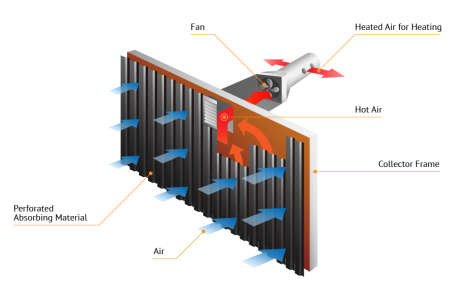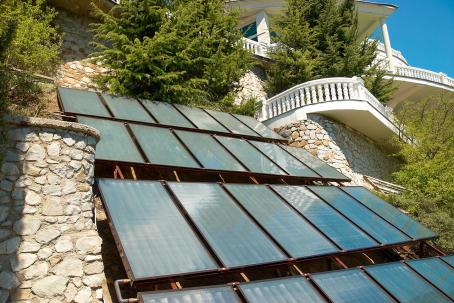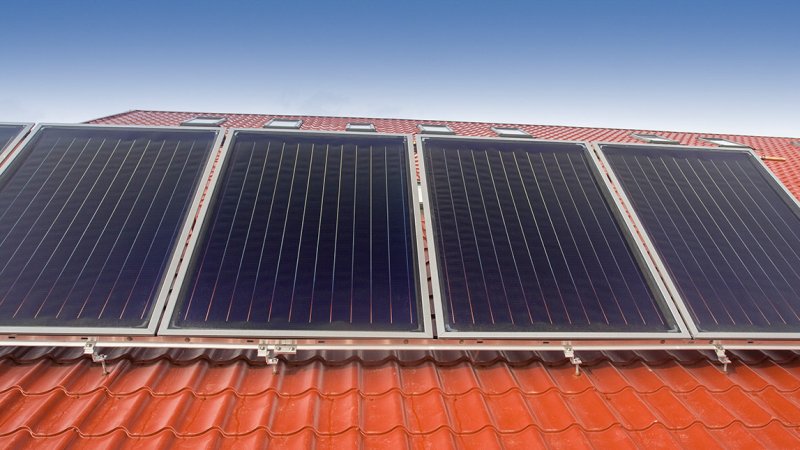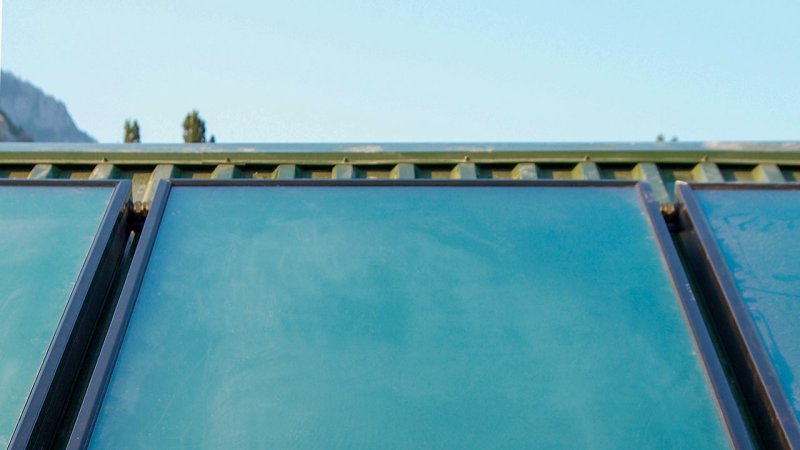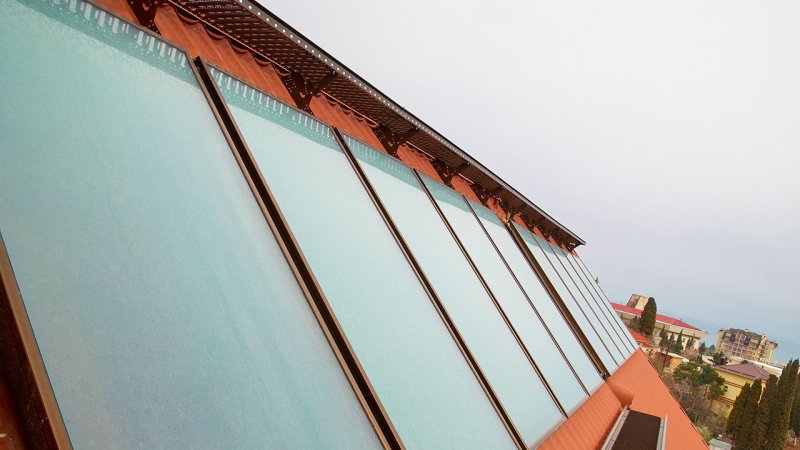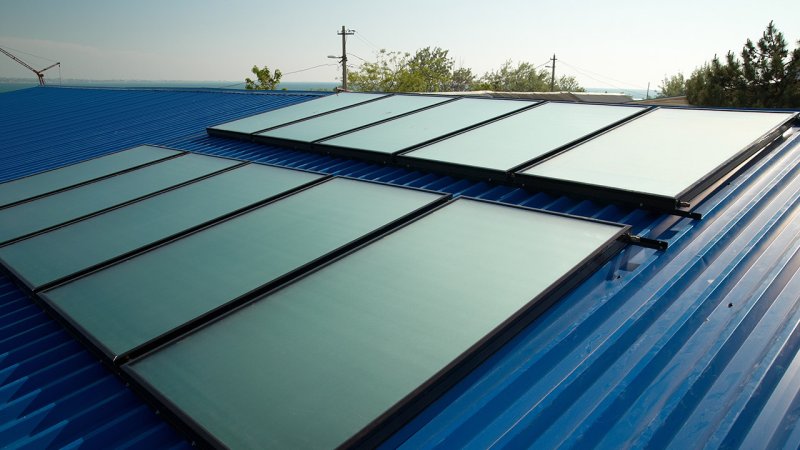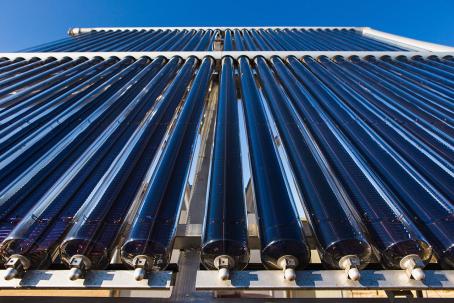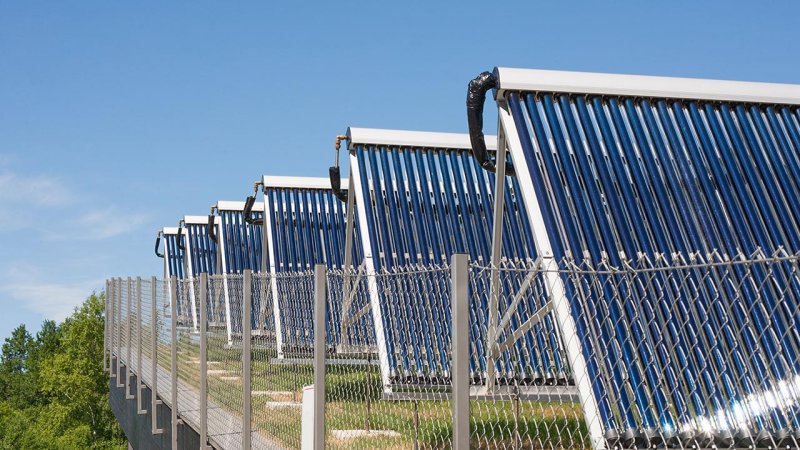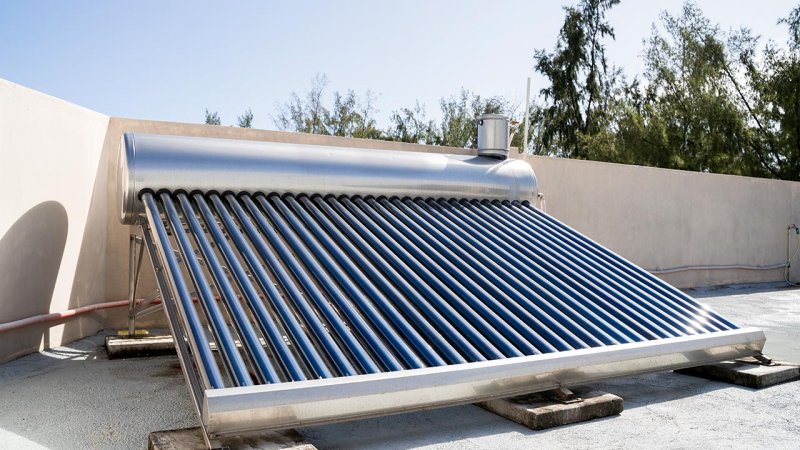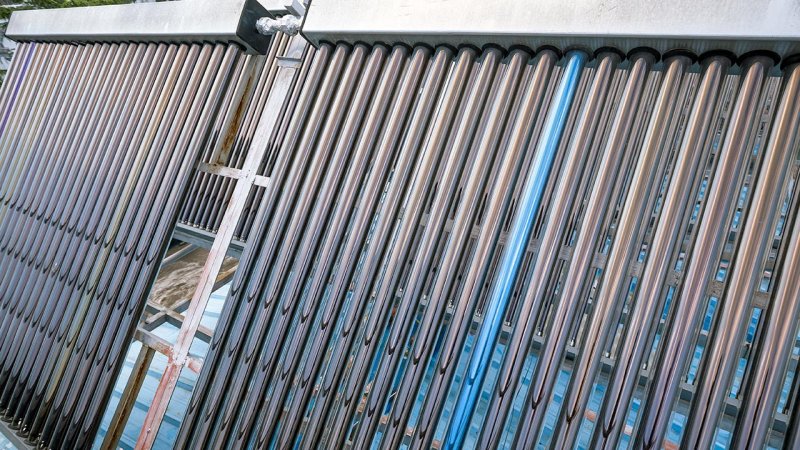
Solar Collectors
7 min read
Air Based Collectors
The primary purpose of solar hot air collectors is to heat air that is used in ventilation or air-tempering systems. By design, these are very simple devices, usually consisting only of a light frame, an absorber, glazing and sometimes a ventilator for propelling the air through the collector. Since no fluid is flowing through them, they do not need to be water-proof and they can neither leak, nor freeze.
The disadvantages of this system is a worse heat transfer between the absorber and the air as well as the lower specific heat of air when compared to collectors with water-based heat transfer fluids. In order to extract a required amount of energy, the area of the absorber needs to be widened and airflow increased. For heat accumulation, hot air is often led into accumulators containing solid materials, such as rocks.
Here are three types of air based solar collector designs:
Unglazed collectors
The absorber with selective coating is exposed directly to the sunlight. Higher convection heat losses are compensated by zero glass reflection. Since the design is so simple, it is widely used to pre-heat ventilation air for which purpose a black perforated absorber is frequently installed on the facade of a building.
Glazed collectors
The absorber is covered by a translucent cover which increases the efficiency of the collector by reducing its heat losses. These collectors can reach higher temperatures and they can be connected to air conditioning or heating systems. An interesting feature may be the incorporation of a ventilator powered by a photovoltaic solar panel. If the sun is shining, the hot air is automatically propelled by the ventilator to the point of consumption.
Closed system hot air collectors with a heat accumulator
Glazed collectors accumulate heat in solid material accumulators (such as rocks). Functionally, they are similar to fluid based thermal collectors. The only difference is that here the heat transfer medium is air.
“Sunshine duration” is a period of day during which the value of direct irradiation by the Sun does not drop under 120 W/m2.
Flat-Plate Collectors
Video: Flat-plate collector.
Flat plate solar collectors are basic building blocks of water-heating solar systems and in some cases as a secondary heat source in heating systems.
A flat plate collector power output depends on many factors. The main factor is the amount of solar energy falling on the surface of the collector. To achieve maximum gain, a collector should be irradiated all day long, facing the right direction and the surface should be perpendicular to falling sun rays. A southerly to south-westerly orientation is ideal. The inclination should be set with respect to the Sun’s path in different seasons, or it should be variable. In central Europe, the best yield is reached at 20 to 30 degree inclinations in summer and at 60 degrees in winter. In practice, variable inclination is not used very often. Collectors are inclined to maximize output at transitional periods that means approximately 50 degrees in central Europe.
The working principle of a solar collector is to capture solar radiation in a copper or aluminium collector which heats up and gives its heat to a heat transfer medium that circulates in pipes. The absorber is coated in a black selective paint which increases heat absorption of diffuse radiation thus making the collector more efficient. To minimize heat loss, the absorber is insulated from the frame, using conventional insulating materials, and is covered by a glass plate or a translucent plastic cover.
Flat plate solar collectors can be 70 to 80% efficient and have a life span of approximately 30 years. They can save up to two thirds in heating energy expenses.
Installing a collector inclination control mechanism can increase perennial yield by 40%.
The optical efficiency of solar collectors is the ratio between the amount of radiation falling on a reference area and the amount of radiation transformed into heat. Its value is usually close to 0.9.
Evacuated Tube Collectors
Video: 3D model of an evacuated tube collector. Vacuum Collectors — reach, due to good insulation properties, better utilization of solar radiation than other types of thermal solar collectors.
Evacuated tube solar collectors use a vacuum for insulation. Thanks to this design they lose less heat than other types of collectors and they reach higher efficiency at less irradiated sites and lower outside air temperatures.
From a design point of view, collectors can be categorized by the number of walls of vacuum tubes, into single-walled and double-walled, or by the means of heat transfer, into heat pipes and U-pipe collectors. The U-pipe concept, where the heat transfer medium flows directly through the absorber in loops, is a less complex solution. The heat pipe, on the other hand, is in fact a binary cycle system. The tube is filled with a low boiling point substance. This substance evaporates as it is heated and ascends to the condensation zone where it loses its heat to a heat transfer medium. Then it condenses and returns in liquid state back to the bottom part of the tube.
Single-walled evacuated tube solar collectors consist of a glass-evacuated tube with a flat, selective surface absorber on the inside. The absorber is attached to the heat pipe or U-pipe. The metal pipe from the absorber has to go through the glass wall of the tube without compromising the insulating vacuum which represents a certain weak point in the design. The transition must be very tight.
A double walled evacuated solar collector consists of two glass tubes, one inside the other, working on the same principle as a vacuum flask (a thermos). The air from the space between the two tubes is evacuated to reduce heat loss of the absorber to its surroundings. The outer surface of the inner tube is coated with a special selective paint with excellent radiation-absorbing properties. The absorber itself is inside the inner tube in a non-evacuated environment. To allow for a smooth transfer of heat from the absorber to the heat transfer medium, a special segment, which ensures good contact, is used to connect the tubes. The lower part of the evacuated tube is coated with barium from the inside. The coating absorbs any atmospheric residue and it turns from silver to white once vacuum integrity has been compromised.



